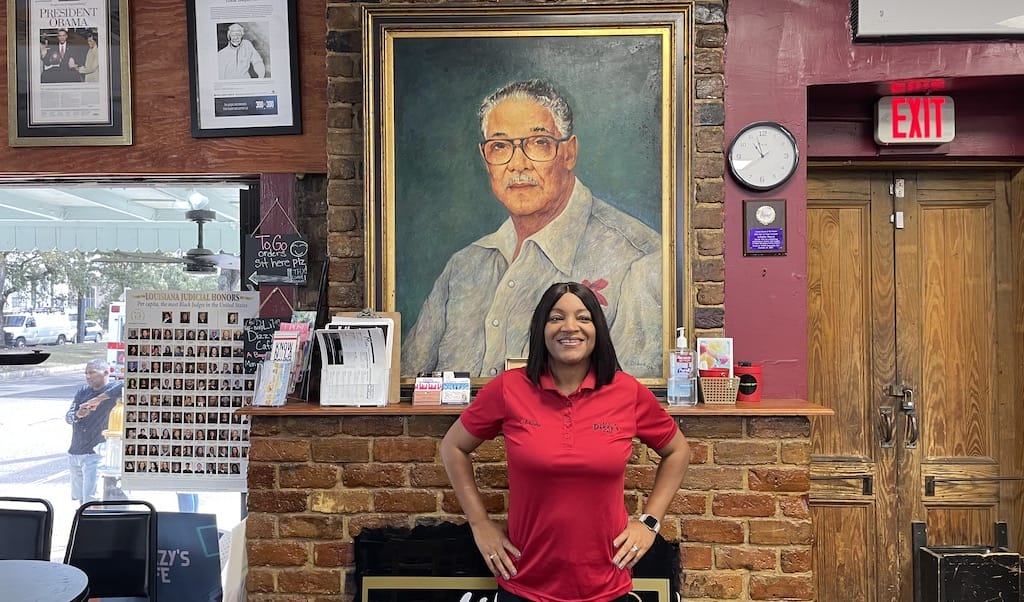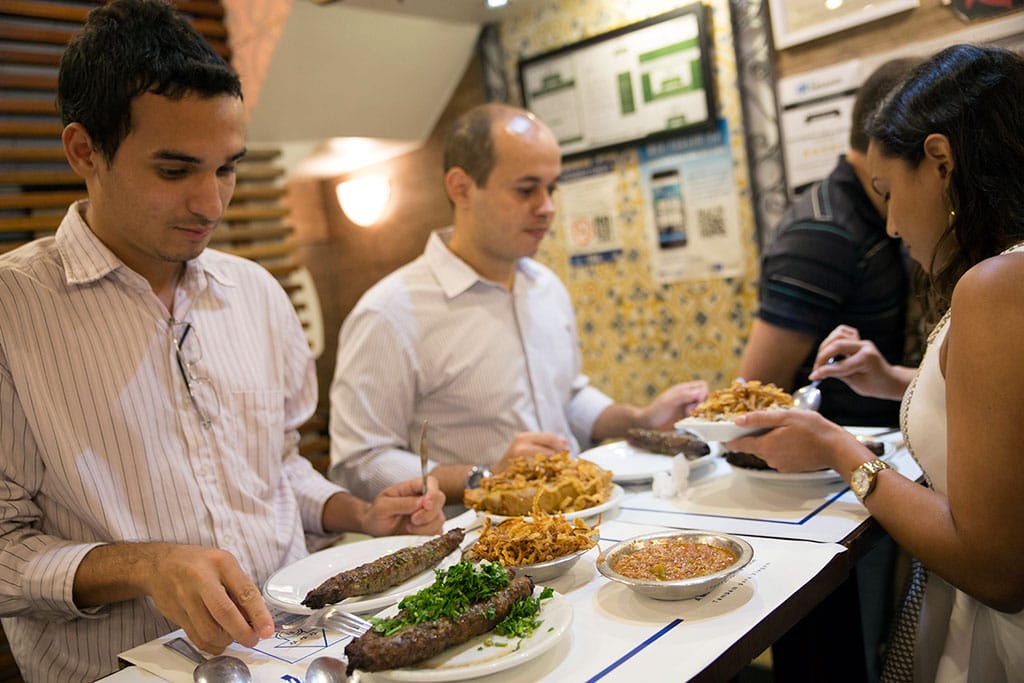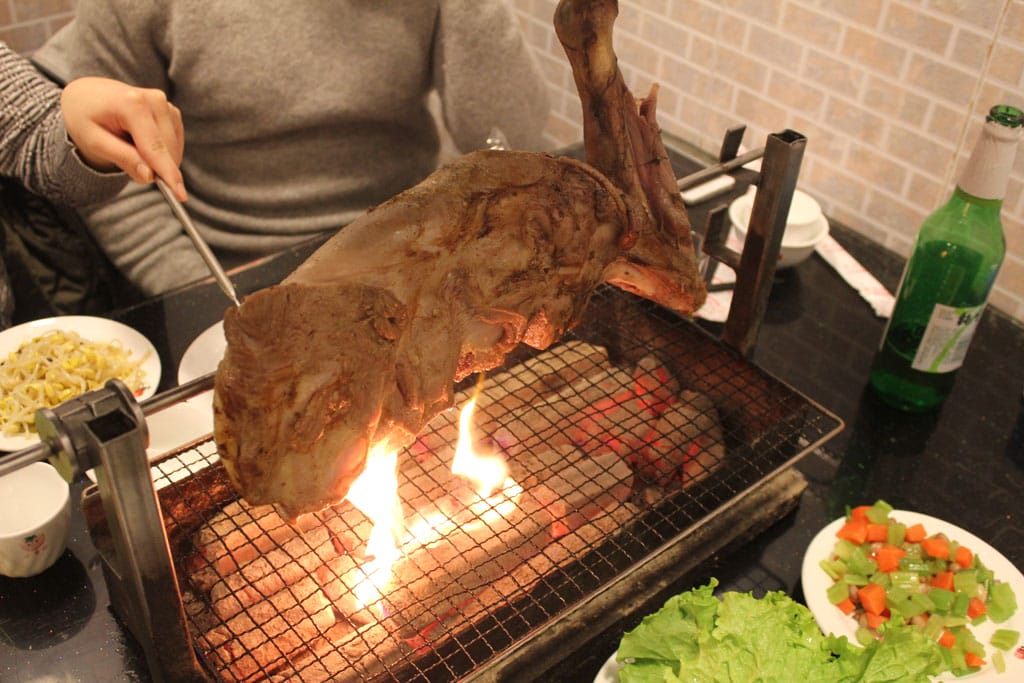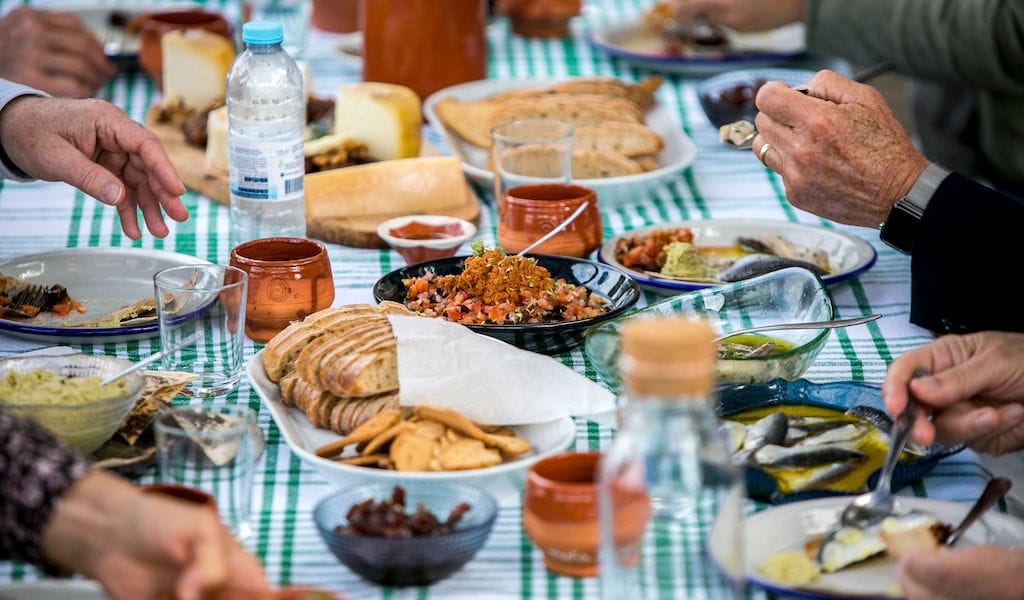Don’t be fooled by the name of Lil’ Dizzy’s Cafe. There’s no coffee, and in fact, the iconic establishment feels more like an auntie’s overstuffed living room than a café. Situated in the heart of Tremé, the oldest African-American neighborhood in America, Dizzy’s is crammed with family paintings and inauguration memorabilia for President Barack Obama, with signed jerseys of retired Saints football players dotting above the doorway.
The celebration of community is the norm in New Orleans. And Dizzy’s is an exemplar of this – purer than the sugarcane used in its sweet tea. Customers stream in – men in suits, others in shorts, cops, families, out-of-towners, mailmen and more as soon as the clock hits 11 a.m. The door unlocks, and Dizzy’s staff begin to shout out “Welcome to Dizzy’s” to first-timers and “Hey, baby! How ya doing?” to regulars.
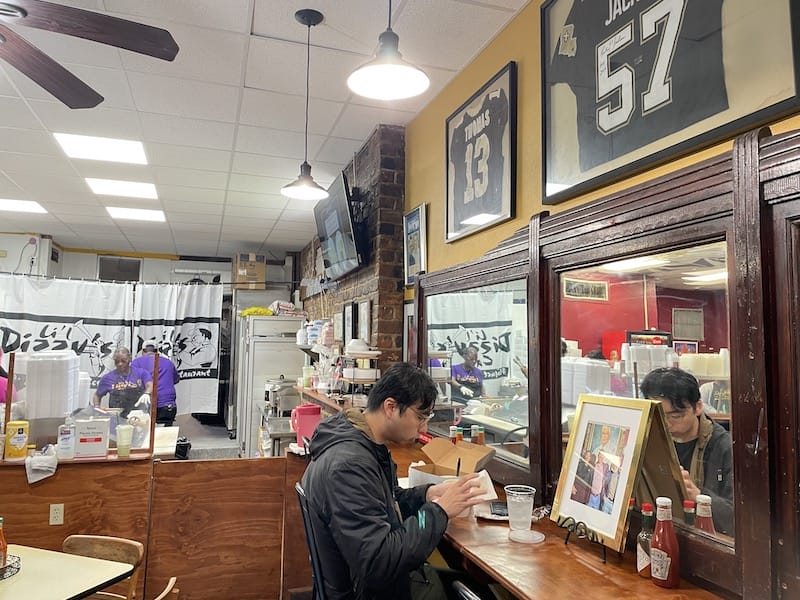
This culinary temple, which opened right before Hurricane Katrina hit the city in 2005, is the most visible pillar of the New Orleans institution that is the Baquet family. Pronounced “bah-KAY,” theirs is a legacy deeply rooted in the city, with well-known family members, from artists to journalists. But the Baquet restaurateurs, in particular, have been serving up gumbo, fried chicken, red beans, seafood and sides in New Orleans for three generations in establishments across the city. When Lil’ Dizzy’s became one of the first places to open back up after the storm, Oprah called them the “comeback kids,” while other newspapers proclaimed them the “Creole Kings.”

During a recent visit, we met up with Arkesha Baquet, 49, who handles the everyday operations at the restaurant. “My son is preparing to be the fourth generation. It’s a big deal for the legacy to continue,” Arkehsa told us, as she moved excitedly around the restaurant, explaining the menu to customers, going back and forth between speaking with us and her staff, and coordinating catering orders (they are especially busy during holidays like Thanksgiving).
“Gumbo is popular every day,” she answered, in response to our question on the top ticket item.
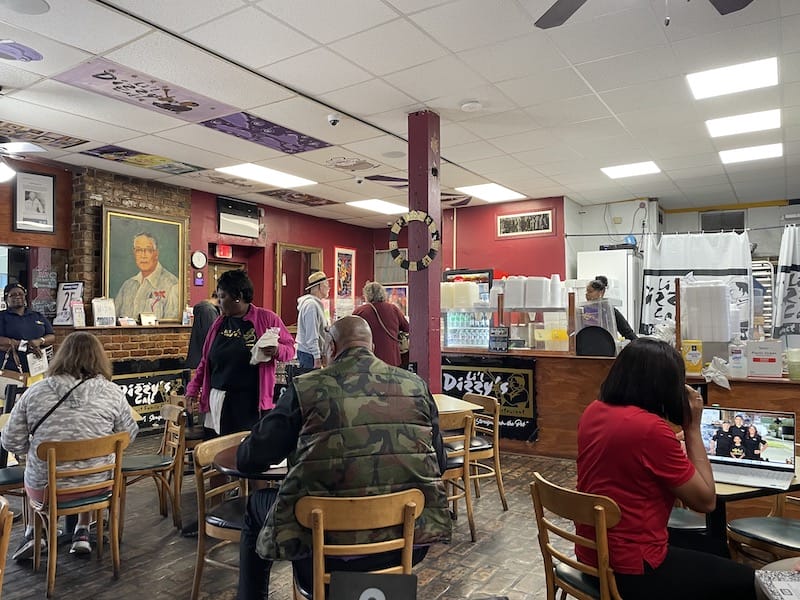
She doted over us while we tried the daily special of Creole white beans, fried chicken and cornbread. Creole food, Arkesha explained, is not like Cajun food. “Cajun is spice. That’s more about being hot. Our food is more about flavoring.”
This type of food reflects the mixture of the people living in New Orleans, with French, African, and Native American cultural influences, among others. The filé gumbo, for example, that Lil’ Dizzy’s is so famous for, is derived from sassafras leaves that Choctaw Native Americans in Louisiana had originally dried for seasoning food.
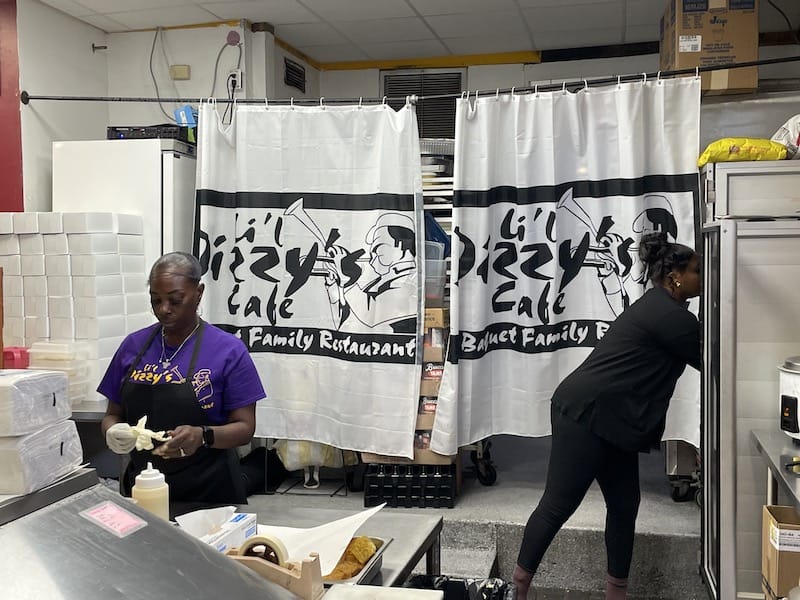
Arkesha recommended that we come back for smothered okra, the special on Thursdays, or Catfish Jourdain, named after the current owner’s mother and served on Fridays, which is topped with shrimp and crab meat in a lemon butter sauce. The “holy trinity” of Louisiana Creole cooking – onions, bell peppers and green onion – can be found in many dishes.
“Come get a different item any day you come,” Arkesha said, as we ate the bits of fried chicken that began to melt into the buttery beans.
Even as the neighborhood becomes increasingly gentrified and tourists can be found live-streaming their meals, the café and its team want to remain true to the Tremé. “Well, let me tell you what Lil’ Dizzy does,” Ms. Baquet said. “First and foremost, we are authentic to the community.”

Still, every visitor will experience the same love, hospitality, and good food. “You are treated like family. Someone is going to greet you; someone is going to go over the menu with you.
The entire staff will even sing you “Happy birthday,” if you’re lucky enough to pay a visit on your special day. Since the restaurant has passed to the third generation of Baquets, customer birthdays have been added to the list of events to revel in, alongside Mardi Gras, St Joseph’s Day, Jazz Fest, Essence Fest, and many others celebrated at Dizzy’s. “I celebrate from the first of December to the first of January, even though [my birthday] is not until December 29,” Ms. Baquet laughed, “So I am big on birthdays. Come here and we will celebrate!”
Before we left, Rashad, a first-time customer from Toronto, bit into a drumstick at the lunch counter. We asked for his opinion, but Ms. Baquet playfully chimed in before he could get a word out, “What you think he gonna tell you?”
Rashad’s radiant smile said it all.
 December 1, 2015 Rotisseria Sírio Libanesa
December 1, 2015 Rotisseria Sírio Libanesa
On a Monday at 1 p.m., private equity investor Nargilla Rodrigues and her two colleagues […] Posted in Rio September 22, 2016 Tan Hua Roast Lamb Leg
September 22, 2016 Tan Hua Roast Lamb Leg
Inner Mongolia is famous in China for its lamb and all the different ways it’s prepared […] Posted in Beijing December 23, 2019 Best Bites 2019
December 23, 2019 Best Bites 2019
A bit like 2018, we saw a lot of old and traditional places closing in 2019, with many […] Posted in Lisbon
Joshua LevkowitzJoshua Levkowitz
Published on April 12, 2024
Related stories
December 1, 2015
RioOn a Monday at 1 p.m., private equity investor Nargilla Rodrigues and her two colleagues bring a fourth co-worker to the Rotisseria Sírio Libanesa in Rio’s Largo do Machado neighborhood to initiate him to their weekly lunch ritual. An army of diners in business attire have packed the small restaurant and clump around the to-go…
September 22, 2016
BeijingInner Mongolia is famous in China for its lamb and all the different ways it’s prepared there, whether it’s braised lamb spine or thinly sliced marbled cuts dip-boiled in a hotpot. Lamb roasted whole is always a great choice, but the more common version (and the one you won’t need to pre-order days in advance)…
December 23, 2019
LisbonA bit like 2018, we saw a lot of old and traditional places closing in 2019, with many others threatened with closure – like Casa Cid, a tasca that has been operating since 1913. An investment group bought the building where the tasca is located and will turn it into a luxury hotel, forcing the…







































